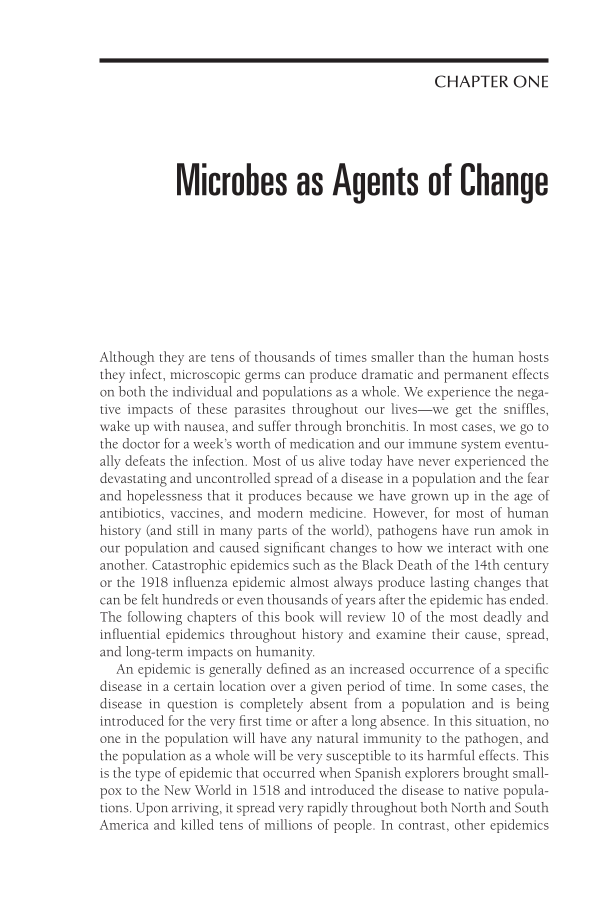CHAPTER ONE
Microbes as Agents of Change
Although they are tens of thousands of times smaller than the human hosts
they infect, microscopic germs can produce dramatic and permanent effects
on both the individual and populations as a whole. We experience the nega-
tive impacts of these parasites throughout our lives—we get the sniffles,
wake up with nausea, and suffer through bronchitis. In most cases, we go to
the doctor for a week’s worth of medication and our immune system eventu-
ally defeats the infection. Most of us alive today have never experienced the
devastating and uncontrolled spread of a disease in a population and the fear
and hopelessness that it produces because we have grown up in the age of
antibiotics, vaccines, and modern medicine. However, for most of human
history (and still in many parts of the world), pathogens have run amok in
our population and caused significant changes to how we interact with one
another. Catastrophic epidemics such as the Black Death of the 14th century
or the 1918 influenza epidemic almost always produce lasting changes that
can be felt hundreds or even thousands of years after the epidemic has ended.
The following chapters of this book will review 10 of the most deadly and
influential epidemics throughout history and examine their cause, spread,
and long-term impacts on humanity.
An epidemic is generally defined as an increased occurrence of a specific
disease in a certain location over a given period of time. In some cases, the
disease in question is completely absent from a population and is being
introduced for the very first time or after a long absence. In this situation, no
one in the population will have any natural immunity to the pathogen, and
the population as a whole will be very susceptible to its harmful effects. This
is the type of epidemic that occurred when Spanish explorers brought small-
pox to the New World in 1518 and introduced the disease to native popula-
tions. Upon arriving, it spread very rapidly throughout both North and South
America and killed tens of millions of people. In contrast, other epidemics
















































































































































































































































































































































